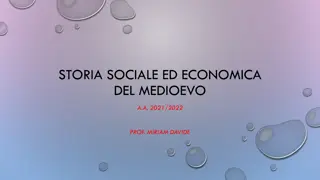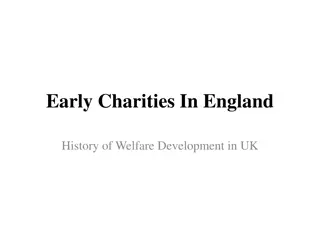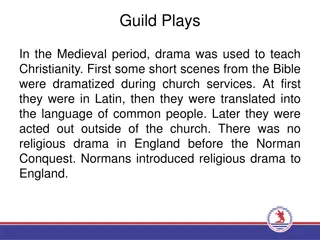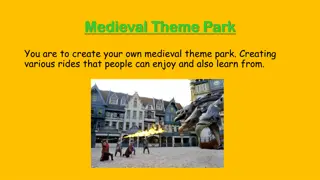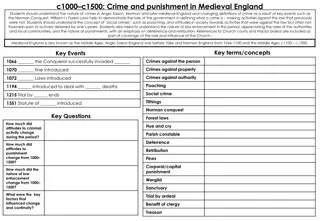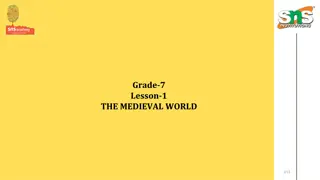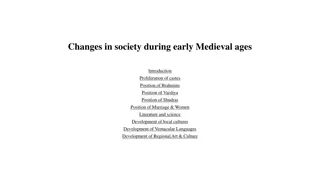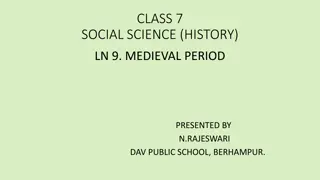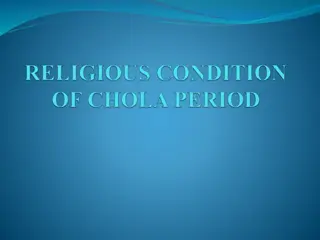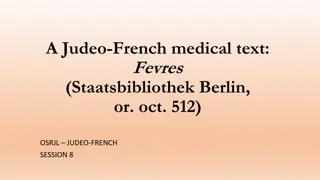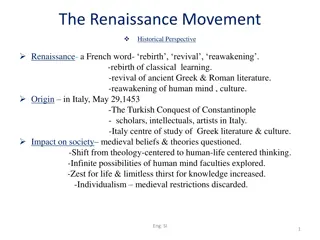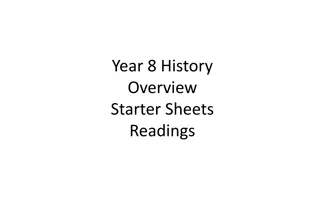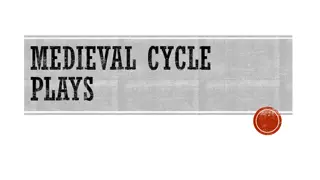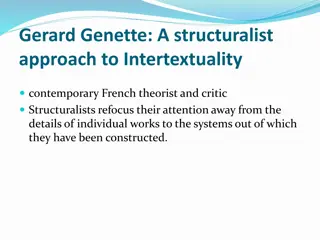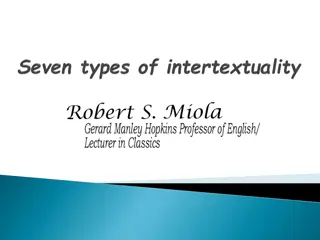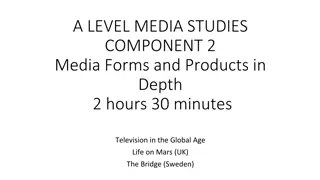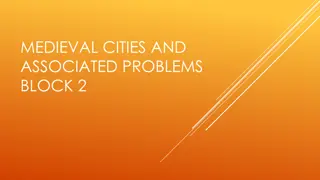Exploring Intertextuality in Medieval Manuscripts
Delve into the concept of intertextuality in medieval manuscripts, focusing on the Châtelaine de Vergy. Discover how manuscript culture and mouvance shape textual mobility and authorship perceptions. Uncover key points on manuscript variations and the dynamic nature of medieval works. Critically examine the interplay between authorial anonymity, textual variations, and scribal rewritings. Reflect on the implications of Zumthor's theories on authorship and the limitations of applying mouvance universally in analyzing medieval texts.
Download Presentation

Please find below an Image/Link to download the presentation.
The content on the website is provided AS IS for your information and personal use only. It may not be sold, licensed, or shared on other websites without obtaining consent from the author. Download presentation by click this link. If you encounter any issues during the download, it is possible that the publisher has removed the file from their server.
E N D
Presentation Transcript
Text and Intertext La Ch telaine de Vergy Lecture 2
Lecture plan Manuscript culture and mouvance What is intertextuality? Intertextuality in medieval texts: the Ch telaine de Vergy The figures of the author and narrator in relation to the text
Manuscript culture andmouvance Key points from last week: Manuscripts provide us with hand- written, individual copies of a work The same text can exist in multiple copies (not all of which are identical) Though authors compose works, these works may be modified later by scribes
Manuscript culture andmouvance Paul Zumthor, Essai de po tique m di vale Mouvance = textual mobility that characterises medieval works Authorial anonymity & textual variation are linked: vernacular works not usually seen as intellectual property of an author and can therefore be reworked Attempt to reconstruct an authorial original is anachronistic The work isn t the archetype/ static starting point for tradition but the dynamic product of it
O 13th-century? Copy 1 Copy 2 14th-century Copy 3 15th -century Late 13th-century
Manuscript culture andmouvance La Ch telaine de Vergy Manuscript C omits vv. 211-216 and 517-18 Example: vv. 211-216 With the extra passage: Psychology Anticipation of duke s later speech (vv. 241-67) Without the extra passage: Focus on the knight s thoughts/feelings
Manuscript culture andmouvance Some reservations about Zumthor s argument: was there a notion of authorship for some vernacular works? should scribal rewritings be treated on a par with authorial readings? mouvance offers important insights into certain types of medieval work but isn t necessarily universally applicable
What is intertextuality? Theory that insists a text is not self-sufficient and therefore doesn t function as a closed system Depends on a certain view of language and meaning: language pre-exists the speaker/writer if we use language to express inner thoughts/ feelings, we are also inhabited by language as a system that exists independently of us language is never fully within our control in the same way a speaker manipulates a larger linguistic system, so the writer operates in a larger system of texts
What is intertextuality? Intertextuality calls into question the idea that a text has fixed boundaries (cf. Zumthor sidea of the work ) Intertextuality is not only concerned with how different versions of the same text might be related but also how texts draw upon/ reflect a wider signifying environment
Intertextuality in medieval texts Manuscript compilations: texts bound with other texts possible connections between different works Reference to literary traditions or other works/ stories may do this explicitly or more indirectly may draw on elements from a range of genres and traditions, rather than working within a particular tradition
The Chtelaine de Vergy Manuscript BNF f.fr. 837 Large, diverse collection Texts that may be intertextually related to the Ch telaine de Vergy: Pyramus and Thisbe; fabliaux; religious works; texts about love (complaints, lyric texts etc.) Zumthor s argument about the Ch telaine de Vergy: text combines elements of fabliau and love lyric
The Chtelaine de Vergy Elements of fabliau plots in the Ch telaine de Vergy: Fabliaux often show women manipulating their husbands Cf. the duchess and her manipulation of the duke Accusation of rape/ seduction attempt related to biblical story of Potiphar s wife Also developed in other romance texts (e.g. Marie de France s Lanval ) Joseph s imprisonment BNF f.fr. 152, fol. 34v
The Chtelaine de Vergy Elements of medieval love lyric: Courtly love (fin amor; amour fine): idolisation of lady; necessity of keeping love secret; ennobling qualities of love Cf. the Ch telaine and the knight s amorous relationship: Similar to love lyric in a number of ways... But Ch telaine de Vergy takes kind of love associated with lyric poetry and places it into narrative Homage to Love BNF f.fr. 380, fol. 14
The Chtelainede Vergy Lyric insertion: 3rd stanza of poem by the Ch telain de Coucy Lyric insertion not unique to the Ch telaine de Vergy butthe way lyric is integrated is different from other works Effects of intertextuality? Text placed in relation to a certain conception of love Generalises as well as explains the knight s situation Lyric fits situation but may contrast with the knight s later actions
Conclusion 1 Two concepts for critical reading: Mouvance Intertextuality These not only describewhat s going on in texts but also help us to read texts in different ways
Conclusion 2 Our discussion today raises questions about the origins of the text and its organising principles: Is it helpful to talk about this text having an author? Is there an organising voice in this text? What roles does the narrator perform?
